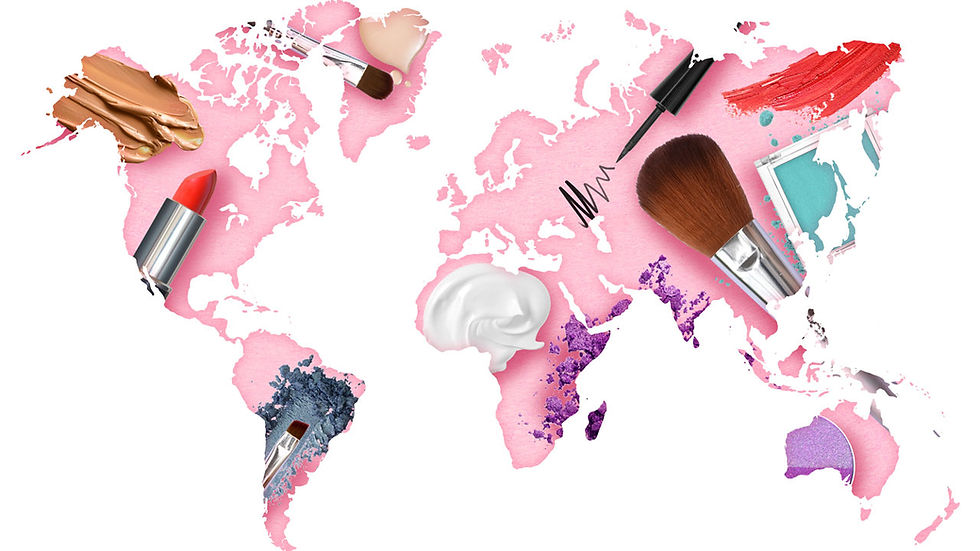- Joan Driggs

- Jul 1
- 4 min read

Consumer product goods have achieved impressive growth in the six years Circana and New York University’s Stern Center for Sustainable Business (CSB) have worked together to study this sector. Yet examples from other global markets demonstrate more growth is within easy reach.
CPG products marketed as sustainable – or items promoted as environmentally, socially, or economically sustainable – are growing at a healthy pace, outstripping the growth rates of conventional goods. Circana data shows even through challenges such as the pandemic, supply chain disruptions, and rising inflation, sustainability-marked products have grown at double the rate of conventional options since 2019, boasting a compound annual growth rate (CAGR) of 12.4%. Despite accounting for only 23.8% of the market in 2024, sustainability-marketed products contributed over 40% of market growth from 2013 to 2024. This means one in nearly every $4 spent on CPG items now supports a sustainable product.
Retail Sustainability Efforts in the U.S. vs. Europe
However, Circana and CSB researchers are frequently asked how sustainability efforts in the U.S. stack up against European markets, where retailers and manufacturers operate under stricter sustainability regulations and where there is more public investment in eco-friendly behaviors and lifestyles, such as public transportation and recycling initiatives. This year, we expanded our sustainability research to study the retail and fast-moving consumer goods (FMCG) sectors in the UK and Germany.
Our findings were eye-opening. In 2024, sustainability-marketed products held a significant 37% share of the FMCG market in the UK and an even larger 42% in Germany. Contrast that with the U.S.’s nearly 24% share. In other words, one out of every $4 in the U.S. is spent on a sustainable product, compared to one out of every €2 in Germany and one out of every £3 in the UK. So, what’s behind this gap?
What is Driving Sustainability Growth for European Retailers?
Much of the sustainability progress made by retailers and FMCG manufacturers in Europe is fueled by the regulatory landscape. Policies such as the European Commission’s Ecodesign for Sustainable Products Regulation enforce detailed requirements on everything from product durability to recycled content. Retailers face penalties for practices like unnecessary disposal of unsold goods, effectively incentivizing them to optimize resources.
Beyond regulation, European retailers are innovating in how they engage consumers. Take the Finnish company Kesko, whose grocery chain, K-stores, assign shoppers a “sustainability purchase score,” tracking sustainable purchases via its store app. Shoppers receive suggestions and promotions for sustainable product alternatives to help customers track their carbon footprint, domestic purchases, and nutritional values of groceries purchased.

Private labels have emerged as a powerful platform for sustainability in Europe. U.S. private labels hold a growing 22% share of the CPG market, but European markets, such as the EU6 region, see private labels driving a 39% share. Retailers in the UK and Germany use private-label brands to deliver cost-effective, sustainable products, often using the same sustainable supply chain rigor as name brands. Premium and organic private-label lines meet consumer demand for eco-friendly options but also enhance retailer differentiation and loyalty.
Three Sustainability Strategies for U.S. Retailers
Europe’s success with sustainability provides valuable lessons U.S. retailers can learn from and replicate. Retailers in the U.S. are well-positioned to capitalize on the growth potential of sustainability-marketed goods given the clear consumer demand for products aligning with their values. Some steps U.S. retailers could take include:
1. Enhance consumer awareness of sustainable practices
Sustainability-marketed products contribute to share growth, but awareness remains a significant barrier in the U.S. Circana’s survey results show only 17% of shoppers currently consider sustainability when choosing where to shop.
U.S. retailers can address this challenge by:
Featuring sustainability certifications and labels more prominently. In the U.S., 69% of consumers discover sustainable products at the shelf or on display while shopping, Circana’s Survey Solutions show. A common theme in Europe is the clear communication of a product's sustainability benefits. For instance, even though U.S. manufacturers in categories like chocolate may use the same sustainable sourcing as European counterparts, they often fail to highlight this on packaging. By paying closer attention to packaging design and marketing messages, U.S. brands can create stronger connections with environmentally savvy consumers.
Highlighting their sustainable business commitments through in-store and digital messaging platforms.
2. Engage younger consumers who prioritize sustainability

Younger generations, particularly Gen Z, are significantly more discerning about sustainability. For those consumers, supporting sustainable brands is closely tied to their values and worldview, as well as their future. Multiple studies show Gen Z shoppers look for sustainable companies, products, and supply chains, and that they’re willing to pay a premium for eco-friendly products. Businesses concerned about their own long-term viability should keep these consumers in mind.
3. Elevate sustainable private label offerings
Private labels are growing share in Europe and the U.S., but American retailers still trail at integrating sustainability into their private labels on product packaging or on the shelf. However, lines like Target’s Kindful and Walmart’s Better Goods show growing recognition of the importance of eco-friendly private label products and represent a promising shift.
The lessons from Europe are clear. Sustainability in CPG is more than a trend. It’s an enduring business imperative that will define market leadership in the years to come. Retailers and brands that invest in sustainable practices, enhance their messaging, and align with the values of younger consumers stand to gain a competitive edge.
To learn more about Circana’s CPG sustainability research with CSB, listen to our Growth Insights podcast episode or watch our webinar.
































